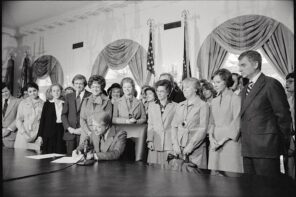What led Mohamed Lahouaiej Bouhlel to rent a refrigerated truck, arm himself with a few pistols and fake assault rifles, and begin his terrible rampage last week on the beachside promenade of Nice?
For some people, of course, Lahouaiej Bouhlel’s motive is obvious. The 31-year-old Tunisian citizen was a radical Islamist terrorist, they insist. He answered the call for global Islamic jihad to shed the blood of “Crusader states.”
By “some people,” I mean two very different groups, with seemingly opposite sets of interests, who nonetheless offer the same answer to this question of Why did he do it?
On the one hand, you have the global Islamophobic right—those (mostly) North American and European politicians who immediately labeled the truck attack as an act of Islamic terror. Newt Gingrich, still auditioning for the role of Donald Trump’s sidekick as late as Friday morning last week, called for a “test” of all Muslims in the US in his response to the truck attack. If they support “shariah law,” Gingrich asserted, they should be forcibly expelled from the country—even if they’re US citizens. Trump himself announced that he would press NATO to declare war on the Islamic State if elected. In France, Marine le Pen, the leader of the far right National Front, blamed Islamic fundamentalism for the violence. In Britain, the conservative commentator Kelvin MacKenzie attacked Channel 4 news for having a reporter wearing a hijab deliver the news.
The Islamophobic right was not the only group insisting that Lahouaiej Bouhlel’s actions must have been motivated by Islamic terrorist sympathies. On Saturday, their chorus was joined by ISIS itself, which claimed responsibility for Lahouaiej Bouhlel’s rampage, calling him a “soldier of the Islamic state.” In the days before ISIS’s official announcement, as Mark Juergensmeyer wrote for RD last week, ISIS supporters online were happily gossiping about Lahouaiej Bouhlel’s supposed affinity for their group, even speculating that he must have gone to Syria to wage jihad before returning to attack France.
There’s just one problem with this interpretation: there’s no evidence for it. New details may come to the surface in the coming weeks, but for now, the Trumps and the terrorists of this world have nothing to back up their claim.
Unlike previous terror attacks claimed by ISIS in the West—like the San Bernardino and Orlando shootings—Lahouaiej Bouhlel made no declaration of loyalty to ISIS. Authorities have not uncovered any ties to terrorist organizations or recruiters.
Lahouaiej Bouhlel was Tunisian. But he was not a practicing Muslim. According to his neighbors and his father, he drank alcohol, ate pork, danced, womanized, never fasted, never prayed, and never went to mosque. He was going through a divorce after his wife threw him out of the house for spousal abuse. In short, he appears to have had less in common with Islamic terrorists than with American mass killers like Elliot Rodgers, Dylan Klebold and Eric Harris, Craig Hicks, Jared Lee Loughner, and Omar Mateen (also an accused wife-abuser). These men seem more bitter than ideological. Attributing a political intelligence to their actions seems far-fetched.
Lahouaiej Bouhlel’s crimes can’t be termed “Islamist” terror, at least not at this point. And yet in the world we live in now, any act of violence on the part of anyone who can be even remotely connected to Islam—even if only by ancestry—is assimilated to a hologram in which all Muslims are dangerous perpetrators of violence. It’s a worldwide funhouse mirror. All Muslims viewed in the shimmering, surreal light of the carnival suddenly grow to monstrous proportions.
This isn’t just a fantasy born of the ignorance of the global Islamophobic right. This is the fantasy of ISIS, too. They also want Muslims to be terrifying, violent, and ruthless. They’re trying to show the world the same funhouse mirror.
Versions of this argument have been made before. During the selling of the Iraq War and the broader “War on Terror,” for example, both neoconservatives and radical Islamists were invested in the widespread perception of an imminent existential threat to Western civilization. Both were invested in a Clash of Civilizations scenario, and both relied on the power of the apocaplyptic vision to build support for their causes.
The anthropologist Kathleen Stewart writes that contemporary American culture is suffused with “apocalyptic dreams” of “redemptive violence.”
“Dramas of a clarifying surge of action saturate ordinary life, macho movies, laws, publics, institutions, and diffuse, existential dilemmas of personhood and power.” Our stories feature “mythic heroes” who “sacrifice themselves to rebirth the world.”
Both in terms of strategy and fantasy, right-wing Islamophobes and global Islamist terror groups want a similar outcome. They have a symmetrical attraction toward a vision of civilizational struggle—one in which great tides of people are lifted up and crash together in grotesque violence. Often, it seems that they want to be stars in the original horror genre: the apocalypse. That’s why, at the end of the day, both ISIS and Islamophobes around the world depict a world in which Muslims are looming, shadowy agents of violence, on a collision course with the Crusaders. It’s a fever dream, a hyperbolic fantasy that threatens to consume us all.
Of course, there is one sense in which the lone killers mentioned above are similar to those who want to systematize and organize violence and project it across the entire world. They, too, see the world in apocalyptic terms and seem to see their failings and humiliations as cosmic in importance rather than ordinary. And maybe that’s where, in the end, it’s wrong to draw too firm a line between “political” and “non-political” acts of terrorism.
Also on The Cubit: What’s to blame for religious violence?
Follow The Cubit, RD’s religion and science portal, @The Cubit





